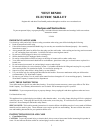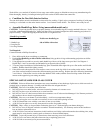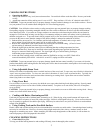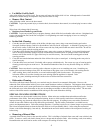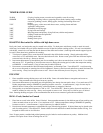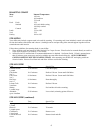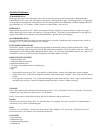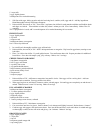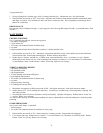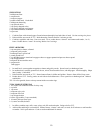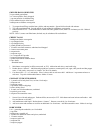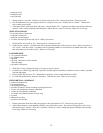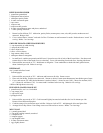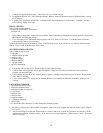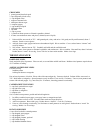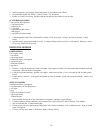5
TEMPERATURE GUIDE
WARM Crisping; keeping meats, casseroles and vegetables warm for serving.
SIMMER Simmering; warming leftovers; preparing frozen foods; heating soups; cooking
casseroles, puddings, cereals; baking apples; braising and roasting meats and
poultry.
225ºF Preparing gravy, white sauce and cheese sauce; cooking frozen and fresh
vegetables; baking beans.
250ºF Scrambling and frying eggs.
300ºF Frying bacon and sausage.
325ºF Browning meats and poultry; frying fish, ham, chicken and potatoes.
350ºF Grilling French toast and pancakes.
375ºF Grilling sandwiches.
400ºF Heating frozen pizza.
ROASTING-Best suited for skillets with high dome cover.
Beef, pork, lamb, veal and poultry may be roasted in the skillet. To obtain more satisfactory results, a metal wire rack,
which may be included with your skillet, should be used to lift the food off the cooking surface. If a rack is not included
with skillet, a metal wire rack that fits into the bottom of the skillet and is about ½-inch high with smooth support legs can
be used. Follow these basic guidelines for roasting:
1. To help seal in natural juices, roasts should be browned in the skillet before roasting. Simply preheat the skillet,
uncovered, at 325º and add the roast. Brown as desired on all sides. Remove roast, place rack into skillet and replace
roast onto rack, fat side up. Season as desired.
2. Insert meat thermometer tip into thickest part of roast making sure it does not touch a bone or rest in fat. Cover skillet
and roast at 225º. If spattering of juices becomes excessive during the roasting period, reduce the temperature setting
to SIMMER. A small amount (½ cup) of water may be added if desired.
3. Roast meat to recommended or desired internal temperature, see Roasting Chart. Turn skillet OFF. Avoid removing
the cover too frequently as roasting time will be lengthened. Remove roast from rack and allow to stand 10 minutes for
easier carving. Always use hot pads to remove rack. Juices in the skillet may be used for gravy, if desired.
POULTRY
1. Place unstuffed roasting chicken onto a rack in the skillet. Baste with melted butter or margarine and season as
desired. Using seasoned salt will help to brown any poultry.
2. Insert meat thermometer tip into thick part of thigh making sure the tip does not touch a bone. Cover and roast at 225º.
Reduce temperature setting to SIMMER if spattering becomes excessive. A small amount (½ cup) of water may be
added if desired. Baste poultry occasionally with melted butter or margarine if desired.
3. Roast poultry to an internal temperature of 180º to 185º. Turn skillet OFF. Remove poultry from rack and allow to
stand 10 minutes for easier carving. Always use hot pads to remove rack. Juices may be used for gravy if desired.
Note: Roasting duckling and goose is not recommended due to the excess amount of grease that accumulates.
HAM---Fresh, Smoked or Canned
1. Place ham on a rack in the skillet. Score if desired. Insert meat thermometer tip into thickest part of ham, making sure
it does not touch a bone or rest in fat. Cover and roast at 225º. Reduce temperature setting to SIMMER if spattering
becomes excessive. A small amount (½ cup) of water may be added if desired.
2. Roast ham to internal temperature recommended for type of ham being prepared. If desired, ham may be glazed at the
end of roasting period. Turn skillet OFF. Remove ham from rack and allow to stand 10 minutes before carving. Use
hot pads to remove rack as it will be hot.
Note: If space permits, scrubbed and pricked potatoes may be baked on rack around meat or poultry. Medium-sized
potatoes will require about 1 hour of baking time at 225º.



